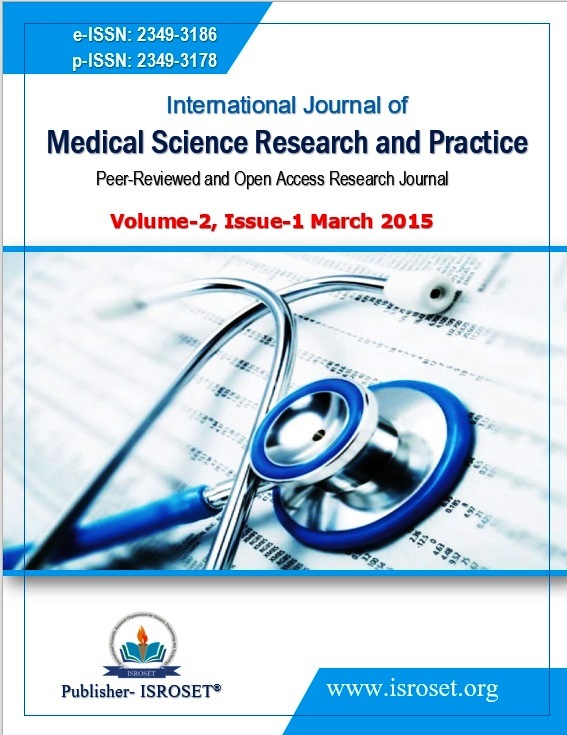Modified pediatric logistic organ dysfunction scoring system: A feasible tool in pediatric intensive care units
Keywords:
Modified PELOD Score, Prognosis, PICUAbstract
Background- Pediatric logistic organ dysfunction (PELOD) score,which can predict mortality or multiple organ dysfunction syndrome (MODS) outcomes, has been validated for children. It is cumbersome to measure respiratory dysfunction variables included in original PELOD scoring, in ventilator and blood gas analysis limited setups, so all three variables included under respiratory dysfunction (i.e.PaO2/FiO2 ratio, PaCo2 and mechanical ventilation) in original PELOD score were replaced by three new variables (i.e. Respiratory rate, Chest retractions and Spo2). The present study aims to modify the PELOD score and make it more clinical and feasible to adopt in resource limited setups rather being dependent on sophisticated facilities.
Aims-Evaluation of modified PELOD scoring system to determine the prognosis of patients in Pediatric Intensive Care Units.
Method- The modified PELOD scoring system consists of physical and laboratory variables representing six organ systems namely neurological, cardiovascular, renal, respiratory, hematological and hepatic system. The score was calculated for the subjects during first 24 hours of admission in PICU. Patients were then followed until they were discharged from PICU or deceased .In each organ system, the highest score in any variable accounted was taken as the score for that organ system. The sum total of the 6 scores for each organ system gives modified PELOD score (range 0-71) which was used for looking at the association between modified PELOD score and mortality.
Results- The risk of mortality varies directly with the modified PELOD score of the patients. In those patients whose modified PELOD score was <10, mortality was 10.4%, whereas in patients whose modified PELOD score was >10, mortality increased significantly to 46.4% (χ2 = 12.000, P < 0.001).The mean (SD) modified PELOD score was considerably higher in those who died as compared to those who survived (16.25 (8.63) vs 7.68 (5.55); p<0.001).
Conclusion- The modified PELOD score can be used as a reliable prognostic predictor of mortality among PICU patients.
References
Tan GH, Tan TH, Goh DY, Yap HK. Risk factors for predicting mortality in a paediatric intensive care unit. Ann Acad Med Singapore 1998;27:813-8.
Proulx F, Fayon M, Farrell CA, Lacroix J, Gauthier M. Epidemiology of sepsis and multiple organ dysfunction syndrome in children. Chest 1996;109:1033-7.
Leteurtre S, Martinot A, Duhamel A, Proulx F, Grandbastien B, Cotting J, et al. Validation of the paediatric logistic organ dysfunction (PELOD) score: Prospective, observational, multicentre study. Lancet 2003;362:192-7.
Thukral A, Kohli U, Lodha R, Kabra SK, Kabra NK. Validation of the PELOD score for multiple organ dysfunction in children. Indian Pediatr 2007;44:683-6.
Tantaleán JA, León RJ, Santos AA, Sánchez E. Multiple organ dysfunction syndrome in children. Pediatr Crit Care Med 2003;4:181-5.
Khilnani P, Sarma D, Zimmerman J. Epidemiology and peculiarities of pediatric multiple organ dysfunction syndrome in New Delhi, India. Intensive Care Med 2006;32:1856-62.
Goldstein B, Giroir B, Randolph A, International Consensus Conference on Pediatric Sepsis. International pediatric sepsis consensus conference: Defi nitions for sepsis and organ dysfunction in pediatrics. Pediatr Crit Care Med 2005;6:2-8.
Subhi R, Adamson M, Campbell H, Weber M, Smith K, Duke T, et al. The prevalence of hypoxaemia among ill children in developing countries: A systematic review. Lancet Infect Dis 2009;9:219-27.
Lodha R, Bhadauria PS, Kuttikat AV, Puranik M, Gupta S, Pandey RM, et al. Can clinical symptoms or signs accurately predict hypoxemia in children with acute lower respiratory tract infections? Indian Pediatr 2004;41:129-35.
Rajesh VT, Singhi S, Kataria S. Tachypnoea is a good predictor of hypoxia in acutely ill infants under 2 months. Arch Dis Child 2000;82:46-9.
Metta D, Soebardja D, Hudaya D. The use of pediatric logistic organ dysfunction (PELOD) scoring system to determine the prognosis of patients in pediatric intensive care units. Pediatr Indones 2006;46:1-6.
Honna L, Triratna S, Triwani, Theodorus. Use of pediatric logistic organ dysfuction (PELOD) in determining prognosis among pediatric intensive care unit patients. Pediatr Indones 2010;50:347-50.
Goh AY, Lum LC, Chan PW Paediatric intensive care in Kuala Lumpur, Malaysia: a developing subspecialty. J Trop Pediatr 1999;45:362-4.
Marshall JC, Cook DJ, Christou NV, Bernard GR, Sprung CL, Sibbald WJ. Multiple organ dysfunction score: A reliable descriptor of a complex clinical outcome. Crit Care Med 1995;23:1638-52.
Hendra S, Runtunuwu A, Irene J, Manoppo C. Pediatric logistic organ dysfunction (PELOD) score as prognosis of multiple organ failure in sepsis. Pediatr Indones 2010;50:226-31.
Downloads
Published
How to Cite
Issue
Section
License

This work is licensed under a Creative Commons Attribution 4.0 International License.
Authors contributing to this journal agree to publish their articles under the Creative Commons Attribution 4.0 International License, allowing third parties to share their work (copy, distribute, transmit) and to adapt it, under the condition that the authors are given credit and that in the event of reuse or distribution, the terms of this license are made clear.






